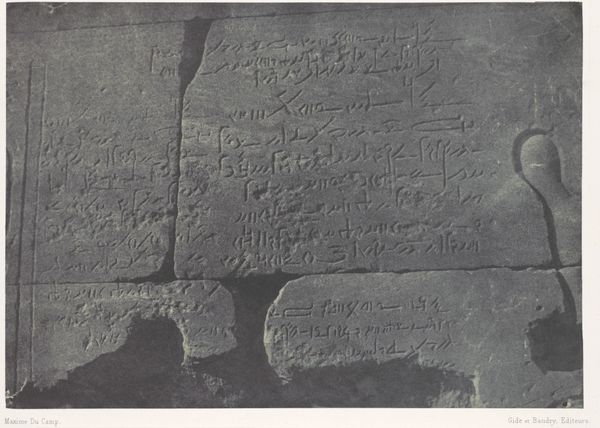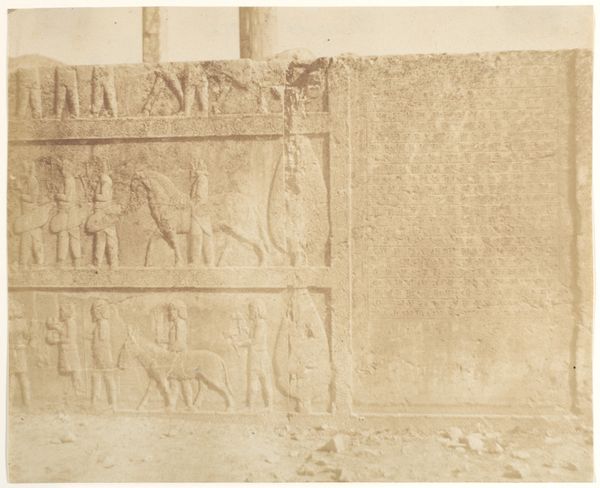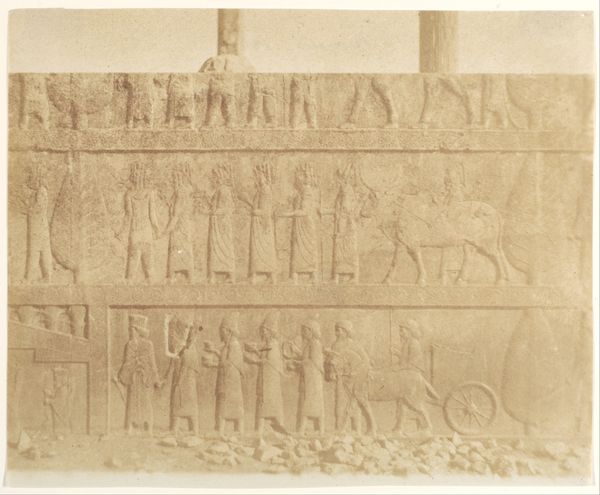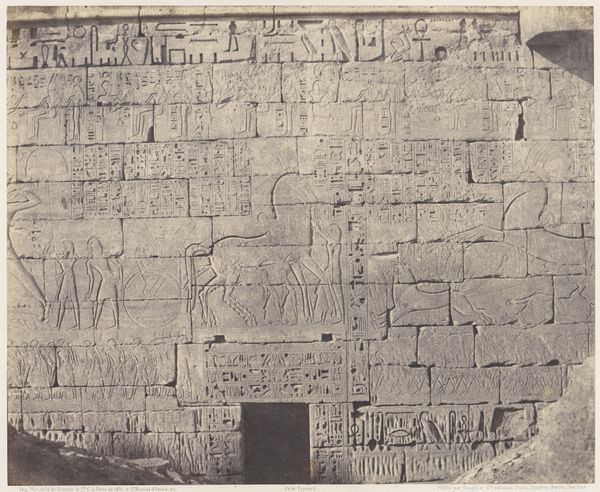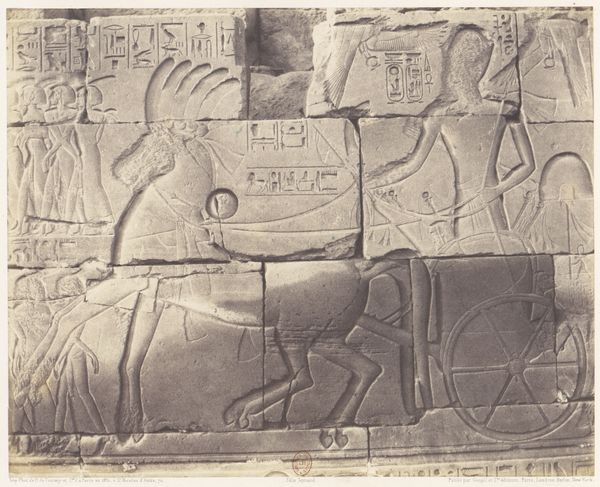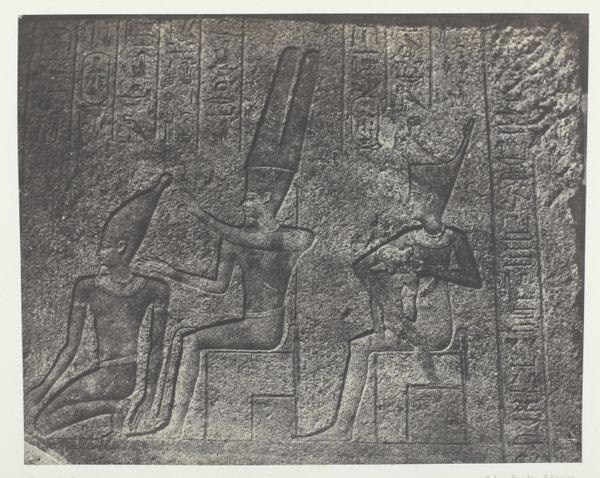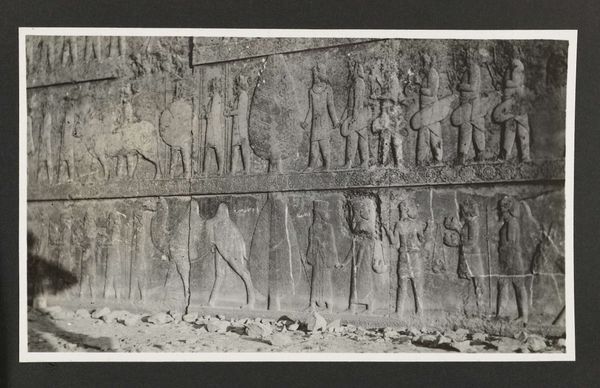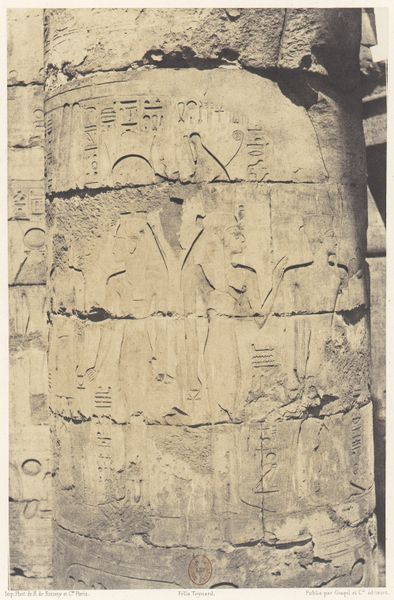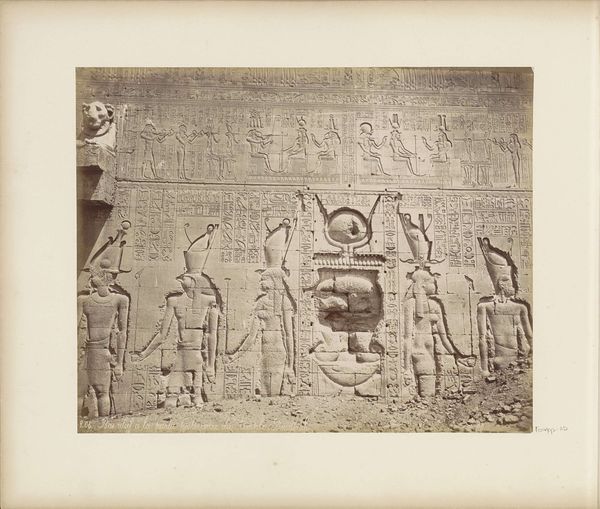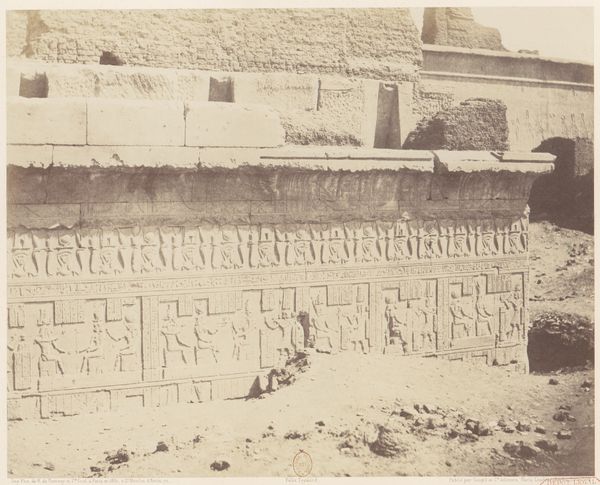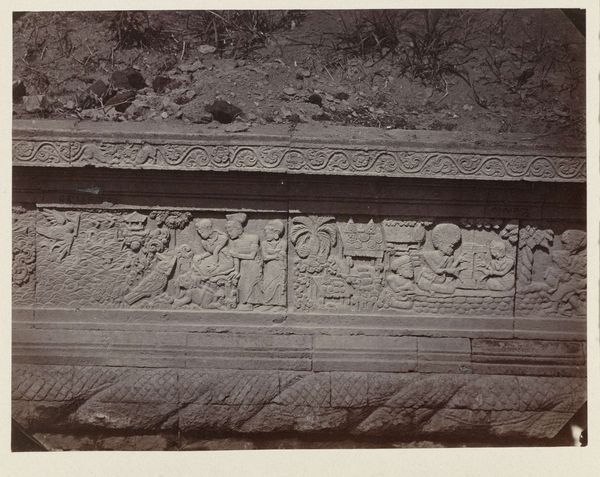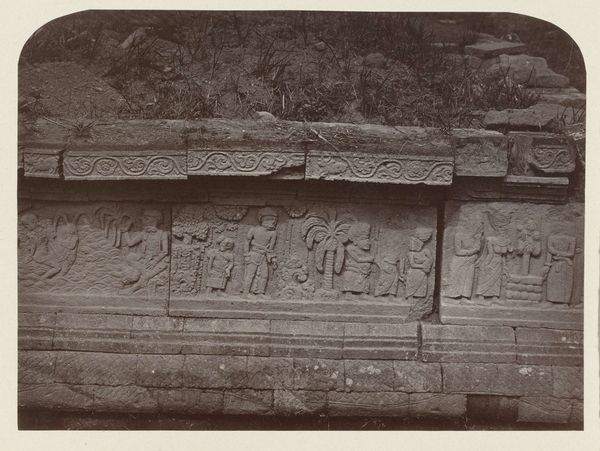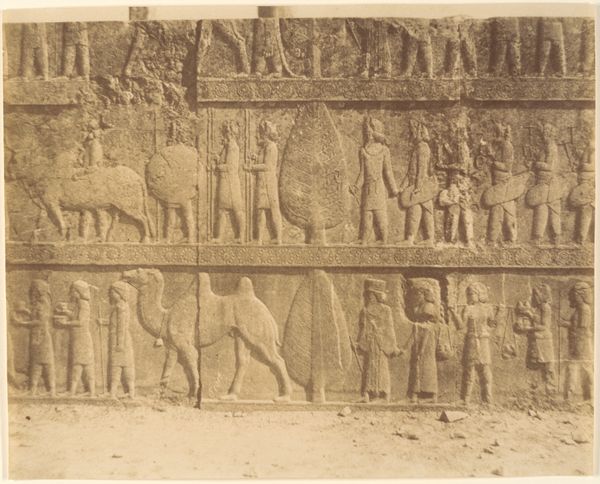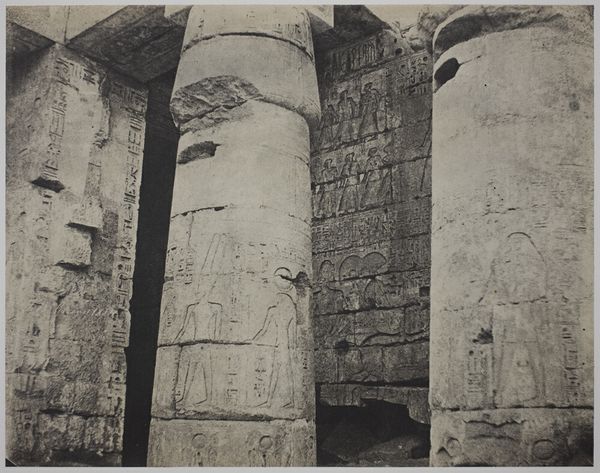
Grand Temple d'Isis à Philoe, Inscription Démotique; Nubie Possibly 1849 - 1852
0:00
0:00
print, paper, photography
#
16_19th-century
# print
#
war
#
ancient-egyptian-art
#
paper
#
photography
#
egypt
#
ancient-mediterranean
#
france
Dimensions: 16.2 × 22.6 cm (image/paper); 30 × 42.9 cm (album page)
Copyright: Public Domain
Maxime Du Camp made this photograph, Grand Temple d'Isis à Philoe, Inscription Démotique; Nubie, using a Calotype in the mid-nineteenth century. The image depicts the wall of the Grand Temple of Isis at Philae, and it shows the hieroglyphic carvings on the wall and demotic inscriptions. These inscriptions offer a glimpse into ancient Egyptian culture, religion, and language. Du Camp was commissioned to travel to Egypt and document monuments of historical and cultural importance. What we should consider is how photography participated in the wider political project of French Colonialism. What did it mean to make these ancient sites newly visible? Analyzing Du Camp's photograph within the context of 19th-century Orientalism requires considering the power dynamics, cultural biases, and colonial interests shaping its production and reception. Researching primary sources such as travelogues, historical archives, and scholarly publications can shed light on the political and cultural context.
Comments
No comments
Be the first to comment and join the conversation on the ultimate creative platform.
